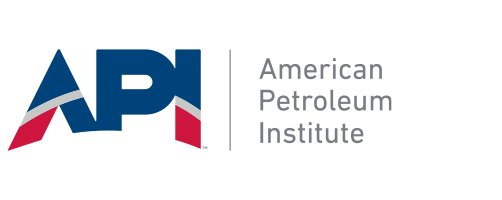 Energy Dialogues: Arnaud, could you provide an overview of your role as VP of LNG Assets and Business Development at TotalEnergies, and share some insights into the company’s footprint and strategy in the U.S.? How does your team’s work fit into the company’s broader strategy and global ambitions?
Energy Dialogues: Arnaud, could you provide an overview of your role as VP of LNG Assets and Business Development at TotalEnergies, and share some insights into the company’s footprint and strategy in the U.S.? How does your team’s work fit into the company’s broader strategy and global ambitions?
Arnaud Lenail-Chouteau: I’m Vice President for LNG Assets and Business Development at TotalEnergies. In that context, I oversee the pure midstream gas assets of the Company—meaning LNG liquefaction plants that are not tied to specific upstream gas fields where TotalEnergies also has a participation, which mostly correspond to our North American LNG assets like Cameron LNG in Louisiana, Costa Azul in Mexico, and Rio Grande LNG in South Texas. Additionally, my team manages some regasification facilities in Europe where we have participation in, and we are also developing some LNG-to-power and distributed LNG projects in some other geographies.
The U.S. is an important country for TotalEnergieswhere we’ve been active there since 1957. Today we are present across the whole energy landscape: this includes upstream production in the Gulf of Mexico and onshore in Haynesville and Eagle Ford plays, petrochemical activities in Port Arthur, equity participation in liquefaction plants, 4 gigawatts solar capacity in operation and under construction, and also participation in gas power plant. Lastly, we are also making strides in carbon capture and storage (CCS), with assets from our recent acquisition of Talos Energy’s CCS projects.
The U.S., and especially Texas, are therefore a perfect example of how we implement our multi-energy strategy.
Energy Dialogues: You are representing TotalEnergies at the North American Gas Forum’s LNG panel discussion, so we are curious to hear your view on how LNG fits into the global supply picture and what advantages and challenges it presents in meeting global energy needs.
Arnaud Lenail-Chouteau: We see LNG as a key energy today and in the future. We anticipate growing demand, and beyond just the demand aspect, we see LNG playing a crucial role in the energy transition. Alongside renewables, LNG can help replace more carbon-intensive energy sources like coal.
For LNG to support the energy transition, it must meet three criteria: availability, affordability and sustainability. This practically means that we need to ensure that LNG supply is sufficient to address the growing demand, and that the new production capacity which is built is done at a competitive cost to make the price affordable for LNG end-consumers. And this needs to be done by minimizing the GHG emissions over the life cycle.
For example, LNG has played a key role in supplying gas to Europe to replace part of the gas pipe from Russia. Between 2021 and 2023, over 40 million tons of additional LNG were supplied to Europe, more than a 40% increase from pre-Ukraine invasion levels. This demonstrates how LNG can be a reliable lever and contribute to energy security being a top priority for many countries.
Energy Dialogues: As one of the largest players in the global energy landscape, how is TotalEnergies evolving its LNG strategy to address both immediate market demands and the longer-term transition to a low-carbon future?
Arnaud Lenail-Chouteau: TotalEnergies is ranked as the third-largest LNG player globally, with an extensive portfolio of around 45 million tons per year, representing approximately 10% of the global market. Our goal is to maintain this market share as the market grows.
In the short term, new LNG capacity is not expected to arrive until 2026-2027, which means the market will remain tight. Any geopolitical events or project delays could exacerbate this situation. To navigate this tight market, it’s essential for TotalEnergies to maintain a diversified supply portfolio. Roughly 60% of our supply comes from equity production, where the company has equity and control on the supply, while 40% is sourced from third-party sales. Geographically, TotalEnergies has a strong presence in the U.S., the Middle East, and to a lesser extent, Africa and Russia, spanning over 12 countries and 15 LNG plants.
In the long term, from 2028 onwards, we foresee a more balanced market when new projects in the U.S. and Qatar come online. This could lead to a softer market and to prepare for this, TotalEnergies is being selective with its investments, focusing on projects with low break-even and technical costs to remain competitive. Additionally, we are managing revenue risk by balancing our exposure to spot prices during the potential lower gas prices period. The market has seen similar cycles in the past, such as when new Australian and Qatari projects came online, and it is preparing for the same cycle to ensure resilience.
Energy Dialogues: With the growing focus on carbon intensity across the energy industry, how important is reducing the carbon footprint of LNG in TotalEnergies’ strategy, and what kind of visibility or expectations do you see from global buyers on this front?
Arnaud Lenail-Chouteau: On decarbonization, TotalEnergies recognizes that while we cannot control the global demand for gas and LNG, we can work at making the LNG that we supply less carbon-intensive. The company as a whole is committed to being a leader on that front, aiming to reduce its carbon intensity by 20% across the value chain by 2030, compared to 2015 levels.
To achieve this, TotalEnergies is developing a carbon footprint reduction roadmap on each of its operated assets, analyzing emissions at the asset level to identify optimization opportunities. We also ensure that new projects utilize the best technology to minimize emissions, such as the Marsa LNG we recently sanctioned in Oman using an all-electric technology, powered entirely by solar energy. This plant is expected to have a carbon intensity of only 3 kg of CO₂ per BOE, making it one of the lowest-carbon LNG plants globally.
Methane reduction is another critical focus. TotalEnergies employs new technologies, like its in-house drone-based Ausea technology, to detect methane leaks at the site level and reconcile it with on-site measurements with sensors. The company also adheres to the OGMP 2.0 standard, which promotes best practices towards measurement and reporting of methane emissions.
Energy Dialogues: How are global regulatory frameworks, such as those in the EU and the U.S., influencing TotalEnergies’ natural gas and LNG strategy?
Arnaud Lenail-Chouteau: In the past two to three years, significant changes have highlighted vulnerabilities in Europe’s gas market. Historically, Europe relied on affordable gas from local production, such as in Norway and the UK, and later from Russia. However, the energy crisis of 2022 drastically modified the landscape. EU consumers have been able to rapidly pivot towards LNG and weather this crisis.
When it comes to the energy transition, we see this as a transition from the current system (“System A”), dominated by fossil fuels at 80%, towards a new system (“System B”) that would hold a much larger share of low-carbon energy. We should not dismantle or stop investment in System A before the necessary infrastructure of System B has been built, and this will take some time given the massive investments required. Disrupting System A too early could lead to unintended consequences, such as energy shortages or higher costs.
This calls for pragmatic, methodical policymaking, especially in Europe, where regulators need to consider the unique circumstances and energy security needs of the region. The U.S., by fostering a balance between investments in production means, energy security, and transitioning to clean energy, may set the pace for the global energy transition. Having access to a combination of abundant resources, large market size, innovative and digital capacity, including access to talents helps.
Energy Dialogues: We’re excited to have you and TotalEnergies at the North American Gas Forum this December. What are you most eager to experience at the event?
Arnaud Lenail-Chouteau: The North American Gas Forum is always a great opportunity to connect with industry leaders and policymakers. What makes this event particularly special is its setting in Washington, D.C., and the very diverse backgrounds of the attendees that contribute to richer discussions that go beyond typical business topics.























